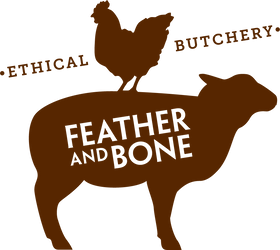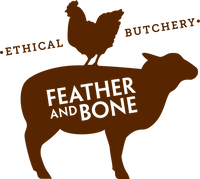Drought report: The Gourmet Goat Lady, November 2018
As the extreme weather across the country continues, the air waves are choked with heartbreaking stories of farmers brought to their knees and struggling to cope. From the city, it's hard to get a clear perspective on the scale of hardship, the causes and the possible solutions. So last November, in response to media reports of farms in crisis due to the drought, we decided to seek some perspective from the farmers with whom we work. Before you read their reports, we'd encourage you to read our introduction - 'Grass roots response to drought'.
We’ve checked in with all of the farms over the last month and it’s sobering to note that little has changed since November 2018.
The Gourmet Goat Lady
Farmers: Jo and Craig Stewart
Location: Buena Vista Farm, Collie, NSW, 2827
Produce: Boer goats. We started buying TGGL goats in November 2011.
29 November 2018
When does a dry spell become a drought?
Our average rainfall is 475-500 mm. In 2017, our average rainfall was 250 mm. In 2018, our average rainfall to date is 130 mm with about 70 mm of that in November.
We are a mixed farm with cropping, meat goats and beef cattle. In 2017, the grazing crops failed and we had to feed with supplementary feed on and off for most of the year. By October the decision was made to sell all weaner cattle and cull cows as we couldn’t see any chance to restock our fodder reserves from our 2017 crops. This left only our breeding cows.
Our fodder reserves will typically maintain all breeders for 8-12 months. But by March 2018, with no rain, dam water evaporating quickly and rapidly losing ground cover, we sold 80% of our breeding cows and calves and closed up paddocks in the hope of saving some ground cover. This proved futile due to the 1000’s of kangaroos that are also looking for fodder.
We decided to keep the goats in production the best we could. They are resilient and can survive where many other ruminants can’t.
By May 2018 we still had no rain, hence no crops planted to provide future fodder. We made the decision to buy fodder from interstate to cover our needs until at least December 2018.
At 29 November 2018, we’re still hand-feeding and 18 out of 21 dams are dry or unusable - most have been cleaned out and enlarged again ready for the rain.
The key points
- A very big area of Australia affected this time
- Bureau of meteorology still can’t forecast the weather
- Fodder prices are very expensive
- Livestock prices are high but good quality is hard to find
- First time in history two failed crops in a row for this area
- Lowest rainfall year in over a 100+ years of family records (that may change still have about 48 days to go)
- Policy makers need policies in place prior to the next drought, not making it up on the run
- Everyone’s drought is different
- Consumers should keep buying farm produce, produced in Australia
- Profiteering from the drought, just stinks.
Kangaroos
We had suspected that the competition for grazing feed by kangaroos was having an impact on our production but the real extent of this has been highlighted this drought.
It’s 29th November and I am mowing my lawn for the first time since the beginning of February. This isn’t because of a lack of rain, it’s because the Kangaroo numbers are so out of control, that some nights we would have 50 plus roos feeding here. That is 9 months of scores of kangaroos feeding just on our front lawn every night. We should have the best fertilized lawn in Australia. At its peak, it resembled a sheep yard.
Exclusion fencing to keep the kangaroos out would have been a wonderful way to go but, as you can imagine, fencing is a significant investment. It is something we need to budget and save for. In the last five years we’ve replaced 25 km of boundary fence at a cost of approximately $5,000 per kilometre. Exclusion fencing would be $8000 - $8500 per km. Given the life of a fence is 30 plus years, we certainly are not going to pull the new stuff down and replace it with exclusion fencing. How best could we implement this type of fencing into our structure now, would the impact be as great?
The most disappointing thing about this drought has been the many images of animals suffering. This is not what any farmer wants. It is such a balance between feeding an animal enough to still be productive and the maintenance required to keep breeding stock alive. Contrary to popular belief, it is just not as easy as saying, ‘okay, today we will get rid of all our stock’. It is a heart rending decision that affects the bottom line of your farming for at least the next 3 to 5 years after the drought.
Everyone’s drought is different.
11 March 2019.
Update on drought.
We had no more rain before Christmas. So we did hit our record low. Really nothing to spruik about. It is now Mid March. We now have 17 out of 19 dams dry. We are so blessed to have bore water, to water stock, others are not so lucky.
There has been 27 mls of rain this year. Dry and dusty still.
Roos back on the lawn again, no mowing required. Fertilization in progress.
Mentally, this dry is taxing. No one can understand anyone else’s position, it makes me want to weep, when others climb over someone else to make themselves look better. Compassion, understanding and kindness, goes a long way.
Pray for rain, please, we are parched.
Jo Stewart




Leave a comment